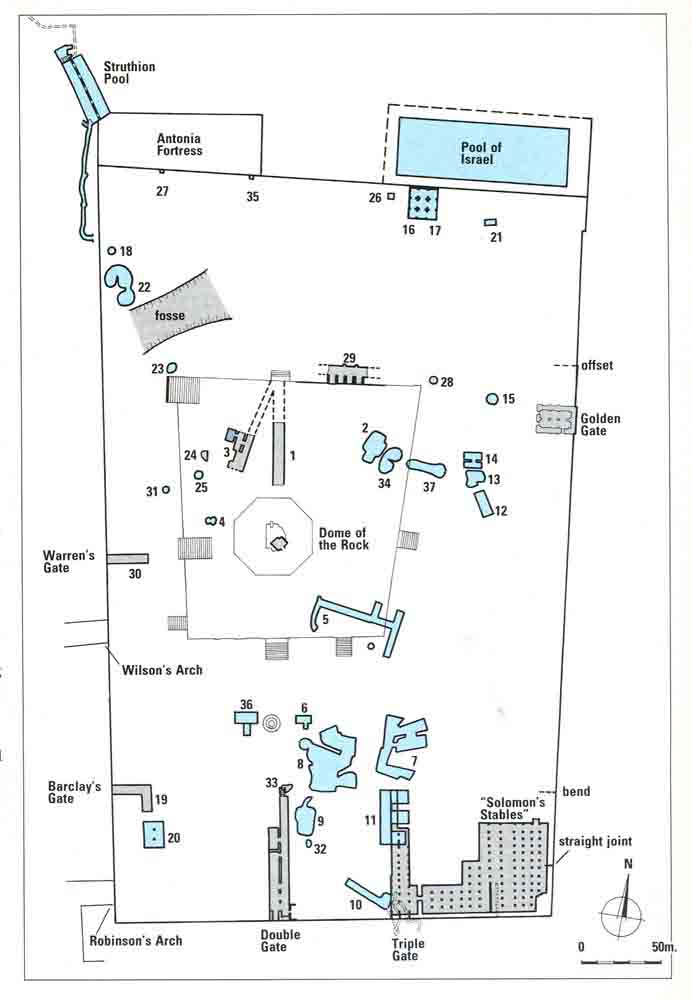Image Details

Leen Ritmeyer
Herodian remains in “Solomon’s Stables” (lower right) indicate that this space was used as underground storerooms during the Herodian period. These structures were rebuilt in their present form probably during the early Islamic period, when the Dome of the Rock and the El-Aqsa mosques were built. They served as stables during the Crusader period. The Pool of Israel (upper right), with a capacity of over 22 million gallons, was a large, open reservoir, built as an integral part of the Herodian Temple Mount. Its purpose is unknown; the pool is not mentioned by Josephus. The Struthion Pool (upper left) is connected with the construction of the Antonia fortress at the northwest corner of the Herodian Temple Mount, and was also an open reservoir, used by the occupants of the Antonia. The quarrying of this pool may have provided the stones for the Antonia.
Warren estimated that the E-shaped cistern below the Akra (number 11, lower right) could hold 700,000 gallons of water and could have supplied the Seleucid troops with ample drinking water in case of siege.
